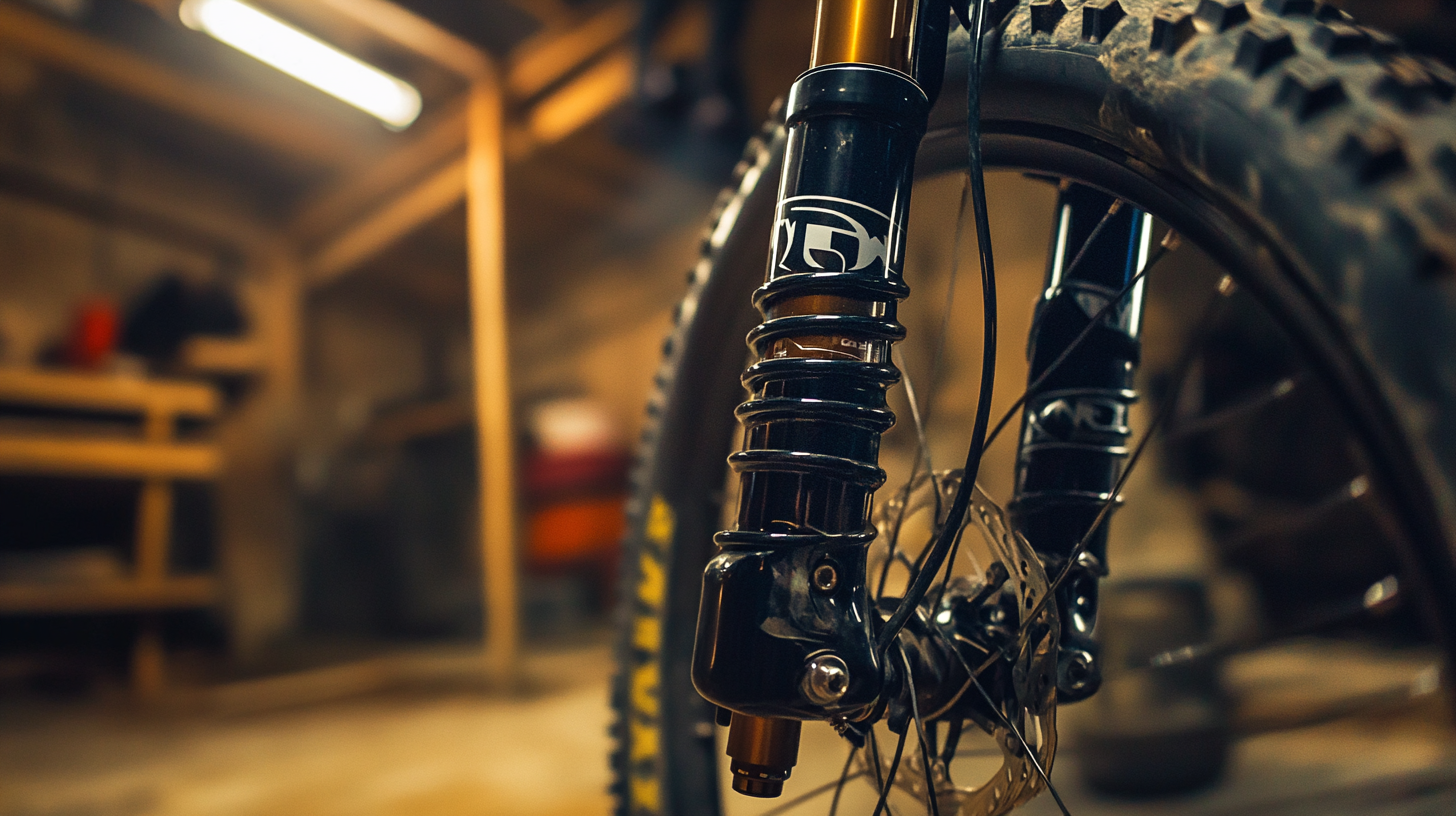In the ever-evolving world of cycling, the quest for a smoother, more adaptable ride has led to significant advancements in bicycle technology, particularly with the advent of Air Suspension Forks. These innovative components offer cyclists an array of unique features that enhance performance and comfort across diverse terrains. From reducing the impact of rough trails to providing customizable stiffness settings, the best Air Suspension Forks available today cater to a wide range of riding preferences and styles.

This blog will delve into the top strategies for selecting the ideal Air Suspension Fork, examining essential features, and highlighting their varied applications in both recreational and competitive cycling.
Join us as we explore how these remarkable forks can transform your riding experience and help you tackle any adventure with confidence.
Air suspension forks have gained popularity among mountain bikers and cycling enthusiasts due to their distinct advantages over traditional coil forks. One of the primary differences lies in their weight, as air forks tend to be significantly lighter, which enhances overall bike performance and agility. The ability to adjust air pressure allows riders to fine-tune the suspension to their specific weight and riding style, providing a customized experience that is often lacking in traditional forks. Moreover, the air spring’s responsiveness means that it can better absorb small bumps while maintaining control during larger impacts.
Another critical differentiator is the maintenance aspect. Air suspension forks typically require less maintenance compared to their coil counterparts. While coil forks might need periodic spring replacements or more frequent servicing due to the wear and tear of metal components, air forks can be easily adjusted with a pump and only need occasional inspection for seal integrity. This ease of use not only saves time but also appeals to cyclists who prioritize convenience without compromising performance. The unique blend of adjustability, lighter weight, and lower maintenance makes air suspension forks a compelling choice for modern riders seeking to enhance their cycling experience.
When selecting premium air suspension forks, several key features should be at the forefront of your decision-making process. First and foremost, adjustability is paramount. The ability to fine-tune the compression and rebound settings enables riders to customize their experience based on varying terrains and personal preferences. High-quality air forks often feature air chambers that provide an optimal balance between comfort and performance, making it essential to look for models with user-friendly adjustment mechanisms.
Another critical aspect is weight. As cycling technology continually advances, manufacturers are focused on reducing the weight of air suspension forks without compromising strength and durability. A lightweight fork enhances maneuverability and overall ride quality, particularly in competitive scenarios or challenging trails. Additionally, consider the construction materials; many premium forks utilize advanced composites and aerospace-grade aluminum to ensure high performance and longevity. Finally, don't overlook the fork’s travel range; choosing the right travel distance for your riding style can significantly influence handling and responsiveness, leading to a more enjoyable experience on both climbs and descents.
When it comes to mountain biking, the choice of suspension forks plays a crucial role in performance and comfort. Today's leading air suspension forks, such as the RockShox Pike, Fox 34 Float, and Marzocchi Z1, have raised the bar significantly across key metrics like weight, adjustability, and responsiveness. Recent industry reports highlight that the RockShox Pike stands out with a remarkable weight-to-performance ratio, weighing just 1,500 grams while providing exceptional stiffness and travel options of up to 160mm. This combination allows it to adapt to various terrains, appealing to both casual riders and aggressive downhill enthusiasts.
In terms of adjustability, the Fox 34 Float offers a revolutionary FIT4 technology that allows riders to customize their settings with precision. According to a survey conducted by the International Mountain Bicycling Association (IMBA), 82% of bikers rated adjustability as a top factor in their satisfaction with suspension systems. The Fox 34 Float's ability to fine-tune compression and rebound damping provides an unmatched riding experience, making it suitable for a wide array of trail conditions.
Meanwhile, the Marzocchi Z1 delivers remarkable resilience on challenging descents, with a simple setup that appeals to riders who prioritize ease of use without compromising performance. Each of these forks showcases the ongoing innovation within the air suspension market, reflecting the shifting demands of modern riders.
When it comes to mountain biking, performance can be radically transformed by the type of suspension used. Recent real-world testing of air suspension forks has shown significant advantages in terms of weight, adjustability, and responsiveness. A study by the International Mountain Bicycling Association (IMBA) indicated that bikes equipped with air suspension forks recorded an average reduction in weight by up to 2 pounds compared to traditional coil forks. This difference proves crucial during climbs and technical descents, as lighter setups enable enhanced maneuverability.
 Moreover, the tunability of air suspension allows riders to fine-tune their setup. According to a report from Mountain Bike Action, 82% of riders experienced improved handling and comfort after adjusting their air forks’ settings. This adaptability means enhancing not just the performance but also the satisfaction of your riding experience, making it essential to invest time in understanding your suspension system's nuances.
Moreover, the tunability of air suspension allows riders to fine-tune their setup. According to a report from Mountain Bike Action, 82% of riders experienced improved handling and comfort after adjusting their air forks’ settings. This adaptability means enhancing not just the performance but also the satisfaction of your riding experience, making it essential to invest time in understanding your suspension system's nuances.Air suspension forks have revolutionized cycling performance across various terrains, offering unique advantages for different applications like trail riding, racing, and more. In trail riding, these forks provide exceptional damping and adjustability, allowing riders to tackle rocky descents and uneven surfaces with confidence. According to a report by the Bicycle Product Suppliers Association, 65% of mountain bikers prefer air suspension systems due to their lightweight design and superior response to varied terrain.
In racing scenarios, air suspension forks are equally vital. The ability to fine-tune pressure settings allows competitive cyclists to adapt to specific course conditions easily. A study published in the Journal of Sports Engineering highlighted that athletes using air fork systems improved their lap times by an average of 4% due to better handling and comfort during high-speed descents. This adaptability is crucial in high-stakes environments where every fraction of a second contributes to the final results, making air suspension forks a top choice for both amateur and professional racers.
Beyond trails and races, air suspension forks are becoming a popular choice in various cycling disciplines, including BMX and gravel riding. Their versatility enables riders to experience enhanced control and stability in diverse settings, further solidifying the importance of this technology in modern cycling advancements. As the cycling industry continues to embrace innovations, air suspension forks are poised to remain at the forefront of improving rider experience and performance.

